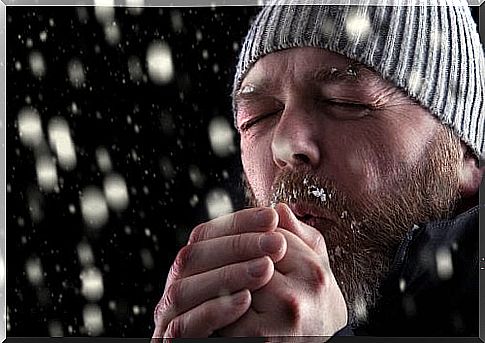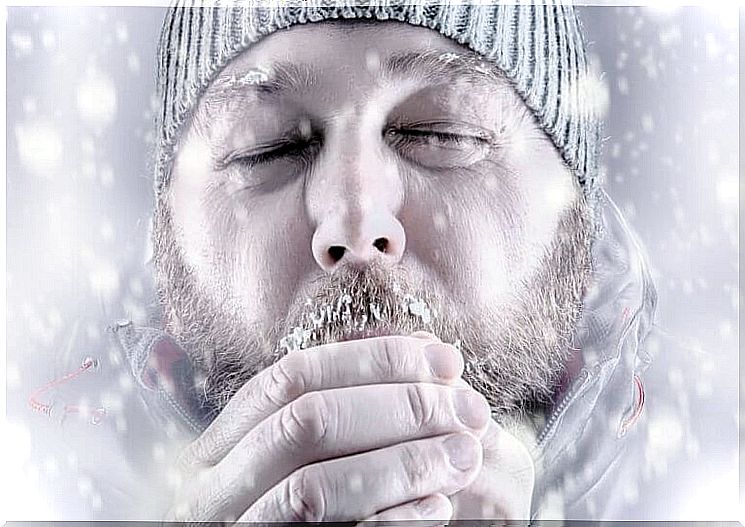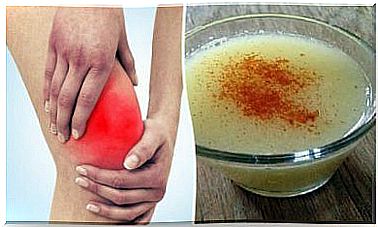Treatment Of A Patient With Hypothermia
Hypothermia is a life-threatening situation. It is important to get your body temperature back up as quickly as possible.

One speaks of hypothermia, when the body temperature of a human being significantly reduced. This condition requires medical treatment as quickly as possible so that further complications for the organism can be avoided.
In our article we therefore explain different degrees of hypothermia and the possible strategies that can be used in treating a patient.
What is hypothermia?

Generally speaking, hypothermia is a medical term that refers to an exceptionally low body temperature. Typically hypothermia is when the patient’s body temperature drops below 35ºC.
There are various circumstances that can cause this condition in a person. Our body actually has a number of mechanisms that protect us from the cold. In this way he tries to generate heat and stabilize the organism.
However, if the extreme circumstance persists, the body is no longer able to regain the lost heat. If the body temperature drops below 35ºC, it is believed that this means that the body is starting to fail.
This is because the generation of heat is less than the loss in any moment.
Ultimately , the organs and blood vessels begin to suffer damage. Failure to adequately treat this condition can cause the person to die from the complications associated with it.
Types of hypothermia
Depending on the severity found in the patient, there are three different types of hypothermia. Usually symptoms appear gradually and get worse as time goes on. That is why we speak of:
- Mild hypothermia (33-35ºC): The most common symptoms are chills or tremors, confusion or disorientation, and difficulty moving. The skin can also change its tone and is very cool to the touch.
- Moderate hypothermia (30-33 ºC): In this situation, the patient begins to lose consciousness and it is possible that he or she may make a slight murmur or stammer. In addition, it also happens that he is very drowsy and loses energy.
- Severe hypothermia (less than 30ºC): Here the individual becomes unconscious and both their heart rhythm and breathing slow down and become weaker. Furthermore, his blood pressure is also below the recommended values.
What are the first aid measures?

First aid is a series of simple measures that can be taken in an emergency. One can try to minimize the resulting damage from an accident while waiting for medical personnel to arrive.
In the case of hypothermia, it is necessary to call the emergency services immediately and check the victim’s condition. To do this, you have to feel the pulse and check your breathing and, if necessary, do cardiopulmonary resuscitation (CPR).
The victim should then be moved to a sheltered place where the temperature is more appropriate.
It is also appropriate to wrap the person in blankets or put on more clothing if they are available. Damp clothes should be replaced by dry ones in order to raise the body temperature.
If there is no sheltered area nearby, the victim should be given warmth to dry damp clothing and restore normal body temperature. If it is possible, you can apply warm compresses or approach the person.
It is not advisable to use direct heat as it can lead to worse complications.
If the person is conscious, they can be stimulated by giving them hot drinks or warm food. In no case is it advisable to use alcohol to calm the victim.
What medical treatment is taking place?
When the medical team arrives, they will follow more appropriate treatment guidelines to stabilize the patient’s condition.
In the case of slight hypothermia, the condition can be treated by passive heating. This technique consists of using warm liquids and blankets to regain the lost heat.
In more severe cases, however, it may happen that the patient is unconscious or that these measures are insufficient to calm him down. In this situation, there are other techniques that one can use to relieve hypothermia:
- Intervenous administration of warm fluid. Usually this is a salt water solution.
- Using humidified oxygen to warm the patient’s airways.
- Applying different amounts of salt water to different areas of the body. A catheter is usually placed in areas such as the pleura or the abdominal cavity.
- In the most extreme cases, a hemodialysis machine may be used. So the blood is taken from the victim, it is brought back to a normal temperature and then it is again released into the patient’s organism.
In any case, hypothermia must be treated immediately with the appropriate measures. The emergency medical team has the necessary resources to do this.
In the easiest cases, however, it is possible to restore normal body temperature with warm clothing and hot drinks.









